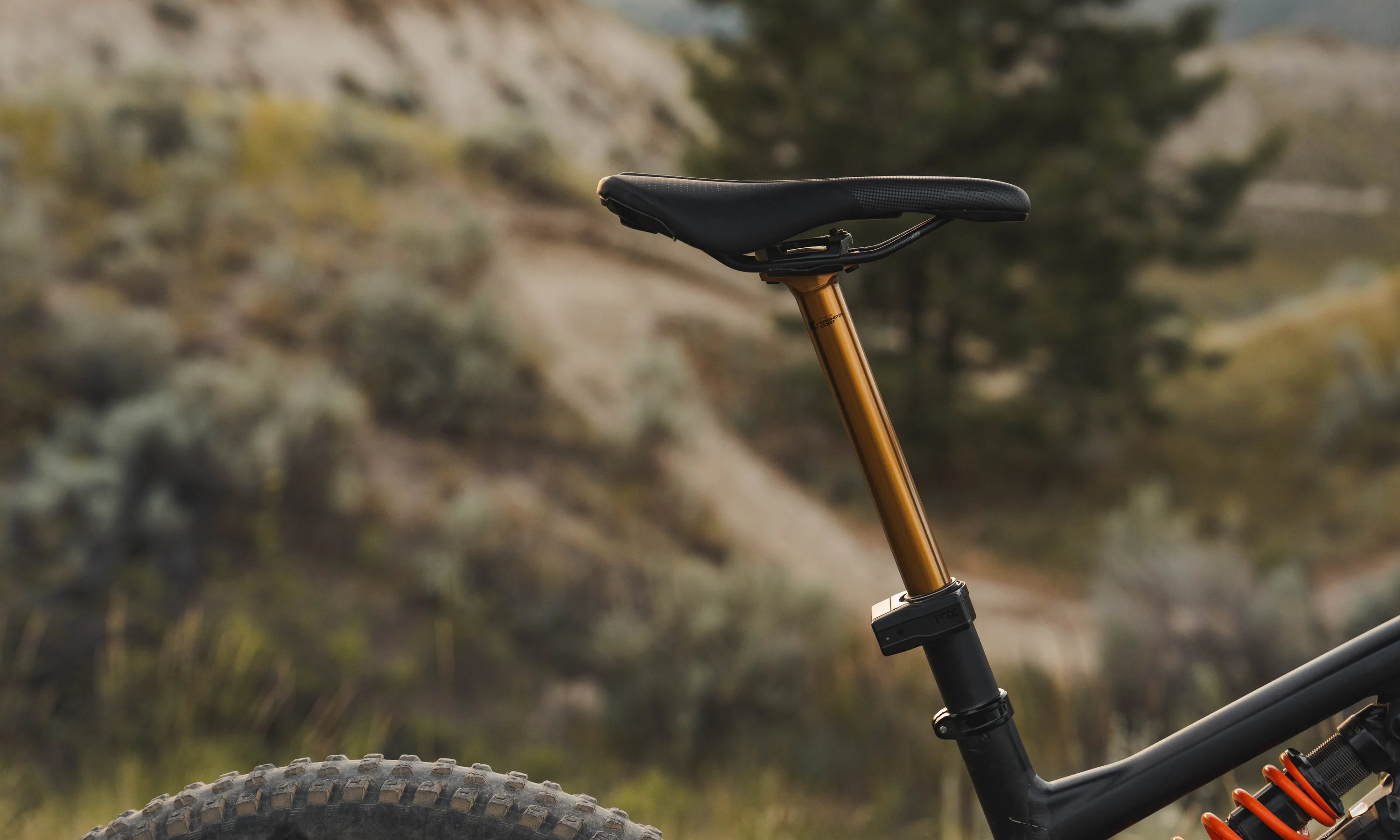SRAM just dropped its new GX Transmission, a slightly more affordable version of the groundbreaking X0 and XX Transmissions. TPC got the GX Transmission in stock last week, so I decided to grab all three, crack open the boxes, and compare them. For all the bike nerds, I made sure to bring a scale and get some real-world weights for all the components.
SRAM GX vs. X0 vs. XX Transmission: Weight & Price Overview

|
GX |
X0 |
XX |
|
|
Rear Derailleur (no battery): |
464g |
448g |
439g |
|
Crankset: |
745g |
712g |
561g |
|
Cassette: |
446g |
380g |
382g |
|
Chain: |
287g |
287g |
277g |
|
Controller: |
47g |
47g |
47g |
|
Battery: |
26g |
26g |
26g |
|
Total Weight: |
2,015g |
1,900g |
1,732g |
|
Price: |
$1,099 |
$1,599 |
$2,049 |

SRAM GX T-Type Eagle Transmission AXS Groupset
$1099.00

SRAM X0 Eagle T-Type AXS Transmission Groupset
$1599.00

SRAM XX T-Type Eagle Transmission AXS Groupset
$2049.00
Pricing vs. Weight
At $1,100, GX Transmission isn't exactly cheap, but it's currently the most affordable option if you want all of the new technology and amazing shifting performance that SRAM Transmissions offer. Each step up to X0 and then XX adds about $500.
According to SRAM, GX offers the exact same shifting performance as its more expensive siblings. It uses the same electronics and design, and the same was true for the previous generation of AXS electronic shifting, so it's not that surprising. If you were blindfolded and shifting through the gears, it's likely impossible to tell the difference between the three different Transmission groupsets.
There are a few material and construction differences that we'll cover later, but the main high-level differences that most riders will notice are in the color/finishes and weight.
GX has a bead blast grey and black finish, X0 has a black finish, and XX has a black and machined silver finish.
As for weight, GX is obviously the heaviest. For an extra $500, X0 sheds just over 100 grams, which isn't much. Then XX is around 170 grams less than X0 and nearly 300 grams less than GX.
What about XX-SL Transmission?

SRAM XX SL T-Type Eagle Transmission AXS Groupset
$2199.00
You'll notice that the top-spec XX-SL Transmission is omitted from this comparison. XX-SL is very similar to XX, but it is designed specifically for XC racing, so the weight of the derailleur, cassette, crank arms, and chain have been reduced by machining away more material and adding more exotic materials like the XX-SL derailleur's carbon pulley cage. Here are the weights of a few key components on my scale:
- XX-SL Rear Derailleur - 414g
- XX-SL Cassette - 347g
- XX-SL Chain - 305g
The carbon crank is essentially the same as XX, but it's a few grams lighter because the crank arms are hollow carbon (XX has a foam core) and the chainring has no integrated bashguards. It also comes with a 34t chainring instead of a 32t. There is also an option to purchase the XX-SL group with a power meter.

SRAM XX SL T-Type Eagle Transmission Powermeter AXS Groupset
$2699.00
I decided not to compare XX-SL directly with XX, X0, and GX because it has a very different target audience. For pro racers or XC weight weenies with money to burn, XX-SL is the best option. For everyone else — the regular trail or enduro rider — it makes more sense to chose between the less extreme XX, X0, and GX groups.
SRAM GX vs. X0 vs. XX Transmission: Rear Derailleurs
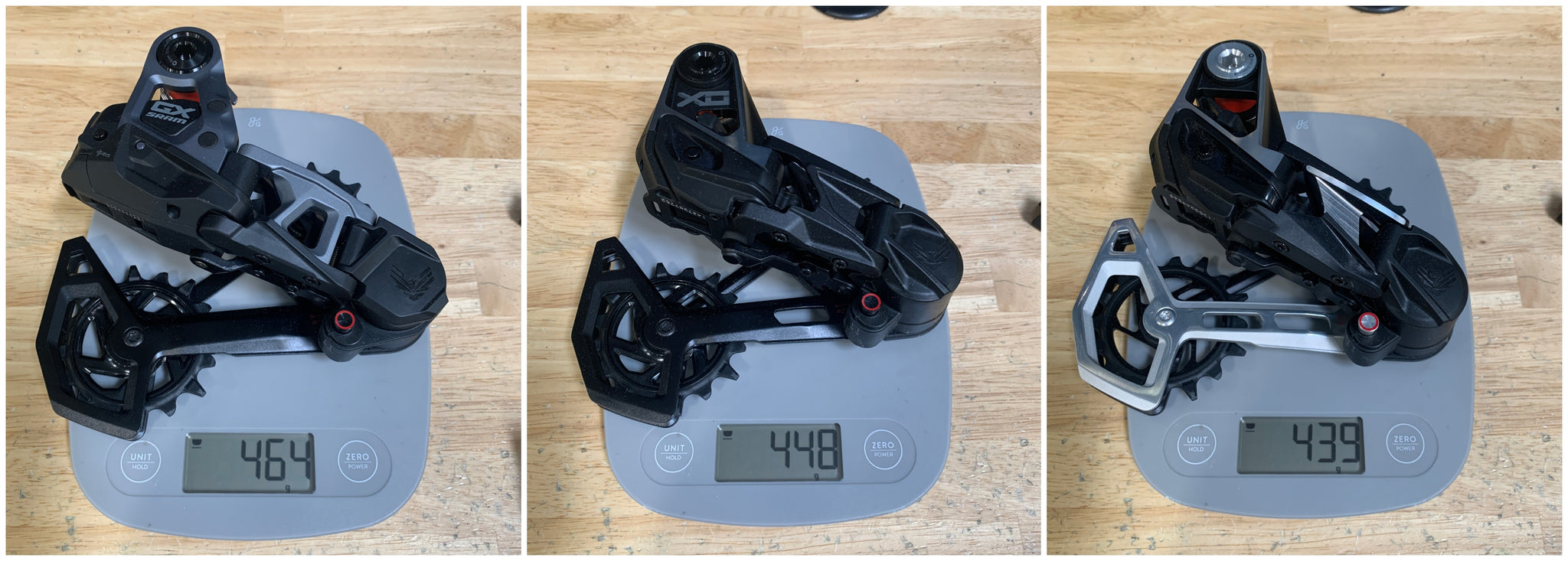 The centerpiece of SRAM's new Transmission design is the direct-mount rear derailleur. This new derailleur mounts to any frame with a UDH (universal derailleur hanger). It replaces the hanger and clamps directly to the frame.
The centerpiece of SRAM's new Transmission design is the direct-mount rear derailleur. This new derailleur mounts to any frame with a UDH (universal derailleur hanger). It replaces the hanger and clamps directly to the frame.
This adds a lot of stiffness to the system and improves shifting. It also means the derailleur actually touches the cassette, which ensures the derailleur alignment is consistent and eliminates the need for traditional limit and b-gap screws. SRAM also uses "cassette mapping" so the the derailleur times its shifts with the ramps on the cassette, so shifts are super smooth, even under full power. The derailleur is super strong, and parts like the skid plates, b-knuckle, and pulley cage are easily replaceable if damaged.
 You can see the different finishes when looking at the three derailleurs side-by-side. It's hard to tell from the photo, but the XX rear derailleur also has the new "Magic Wheel" lower pulley wheel. The outer teeth of the pulley wheel are able to spin independently of the main pulley wheel so if a stick or foreign object lodges itself into the pulley wheel and jams it up, instead of ripping the derailleur off your bike, the Magic Wheel will allow the outer teeth will keep spinning to prevent damage. The X0 and GX derailleur can be upgraded with a Magic Wheel if you want.
You can see the different finishes when looking at the three derailleurs side-by-side. It's hard to tell from the photo, but the XX rear derailleur also has the new "Magic Wheel" lower pulley wheel. The outer teeth of the pulley wheel are able to spin independently of the main pulley wheel so if a stick or foreign object lodges itself into the pulley wheel and jams it up, instead of ripping the derailleur off your bike, the Magic Wheel will allow the outer teeth will keep spinning to prevent damage. The X0 and GX derailleur can be upgraded with a Magic Wheel if you want.
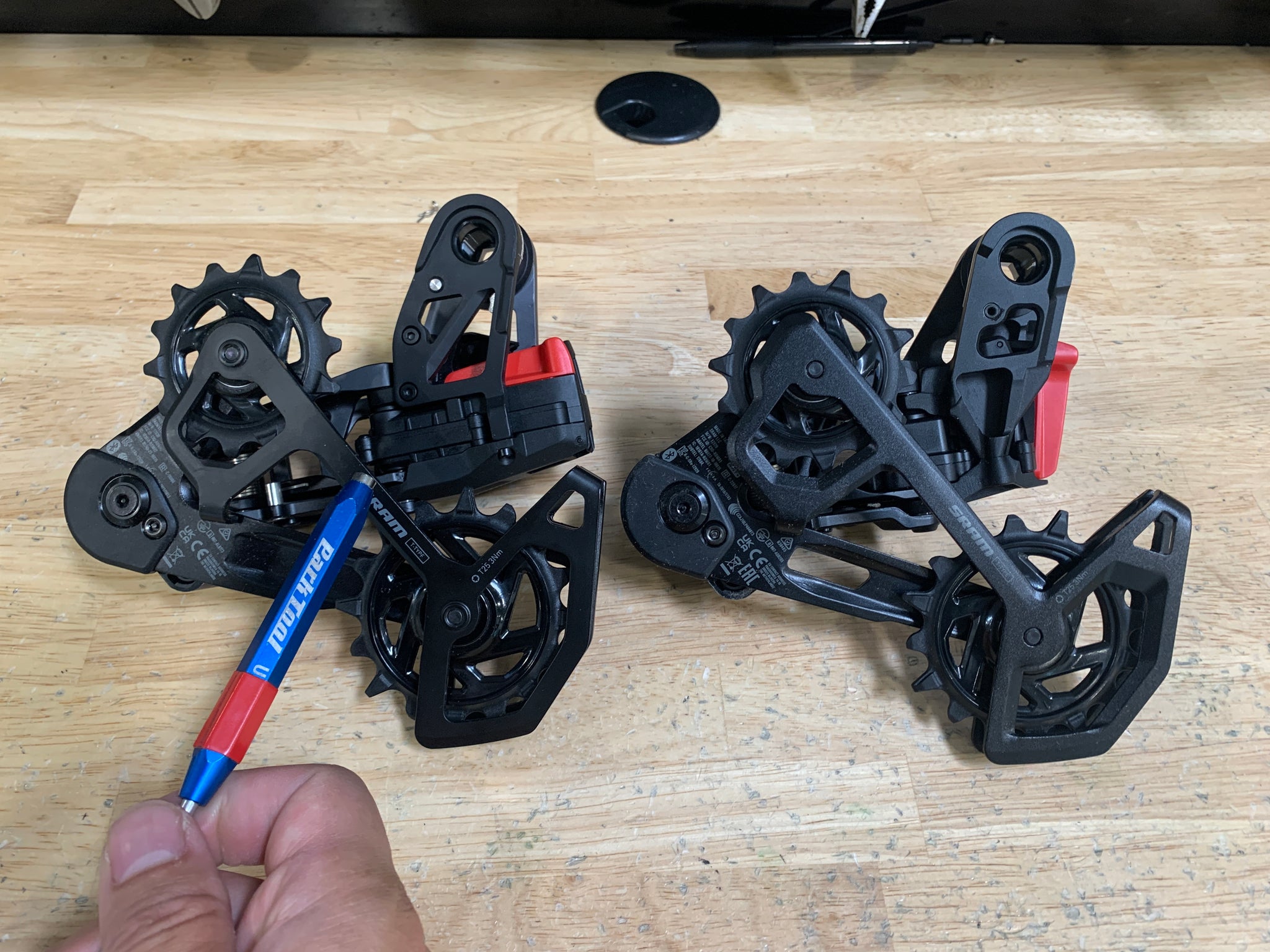 A big reason the GX transmission derailleur weighs more than its X0 and XX Counterparts is because it uses a steel inner pulley cage instead of an alloy cage. I confirmed this with a magnet.
A big reason the GX transmission derailleur weighs more than its X0 and XX Counterparts is because it uses a steel inner pulley cage instead of an alloy cage. I confirmed this with a magnet.
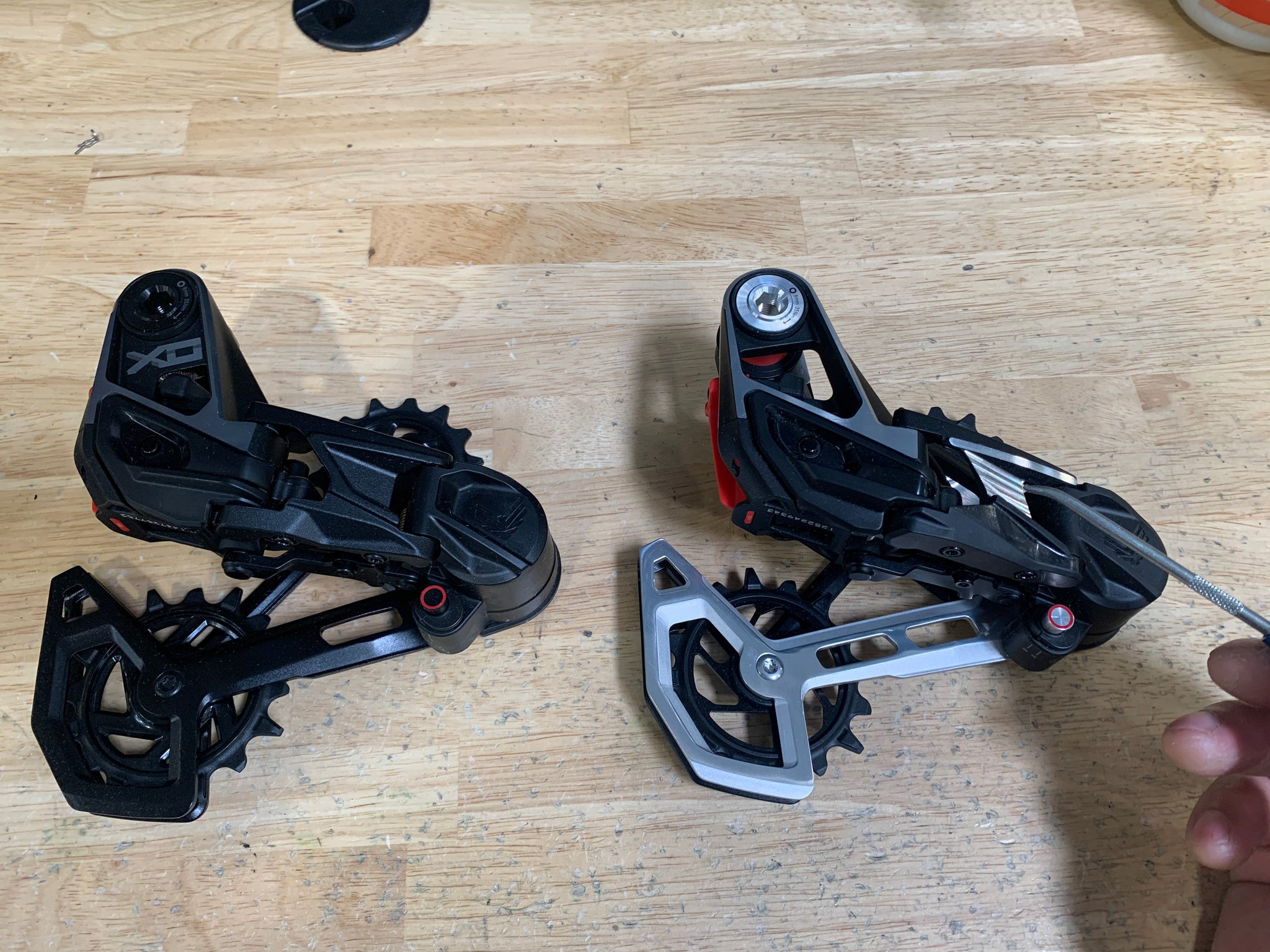 Comparing XX to X0, you can see how the XX derailleur reduces its weight. All the shiny silver bits visible on the skid plates and the derailleur body are where a small amount of extra material have been machined away. This literally shaves a few extra grams, but also increases the cost because of the extra production time. I think it looks pretty cool too. The outer pulley cage is also silver instead of black, and it has more cut-outs and recesses where material has been removed, likely through a different stamping process.
Comparing XX to X0, you can see how the XX derailleur reduces its weight. All the shiny silver bits visible on the skid plates and the derailleur body are where a small amount of extra material have been machined away. This literally shaves a few extra grams, but also increases the cost because of the extra production time. I think it looks pretty cool too. The outer pulley cage is also silver instead of black, and it has more cut-outs and recesses where material has been removed, likely through a different stamping process.
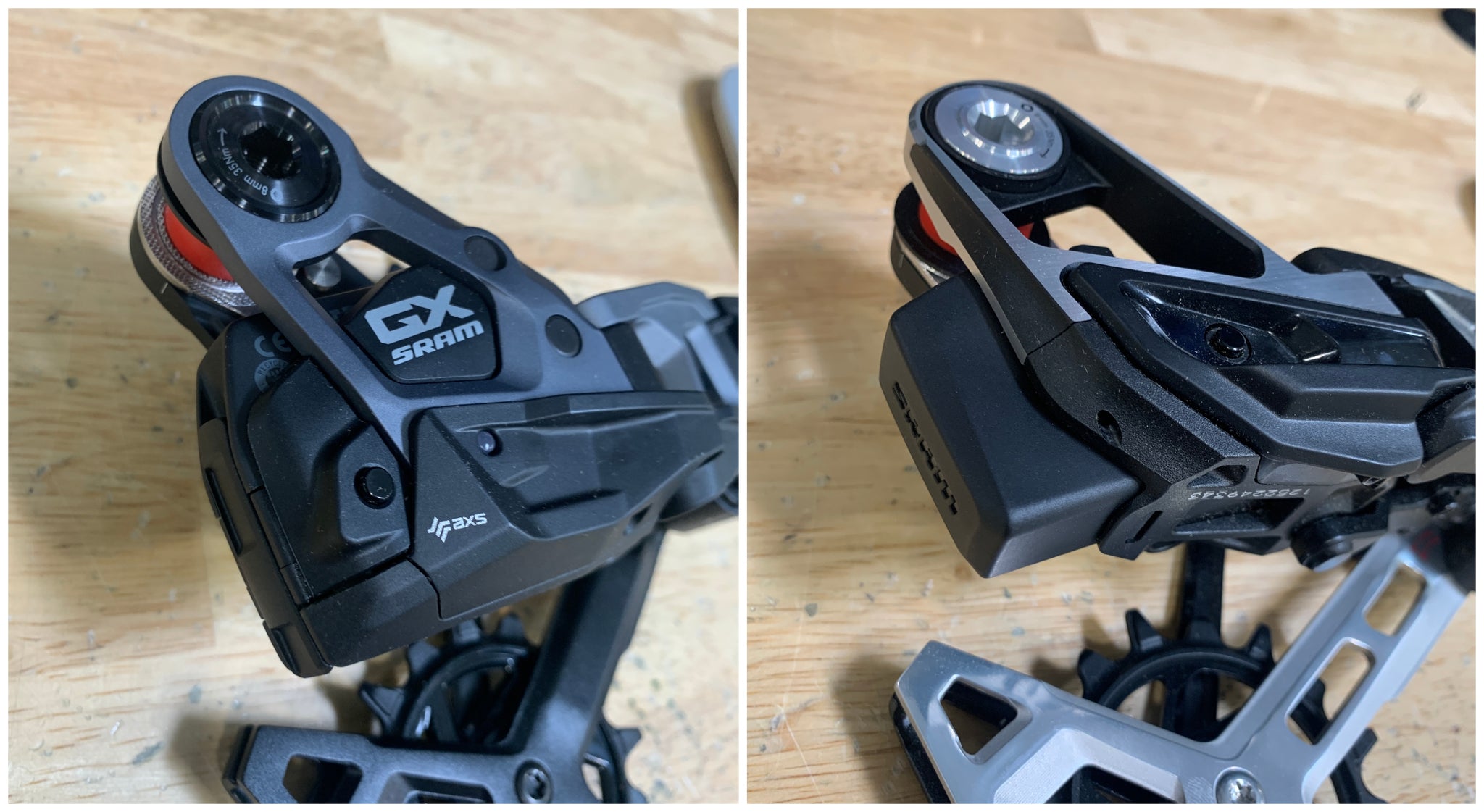 The GX derailleur has a revised battery position. It's tucked into the area between the direct-mount clamps, keeping it more protected. There are a few extreme cases where riders have ripped off the AXS battery in a bad crash. This isn't common, so I wouldn't be too worried, but if you ride lots of gnarly terrain, the GX derailleur might provide some extra peace of mind.
The GX derailleur has a revised battery position. It's tucked into the area between the direct-mount clamps, keeping it more protected. There are a few extreme cases where riders have ripped off the AXS battery in a bad crash. This isn't common, so I wouldn't be too worried, but if you ride lots of gnarly terrain, the GX derailleur might provide some extra peace of mind.
SRAM GX vs. X0 vs. XX Transmission: Cranksets
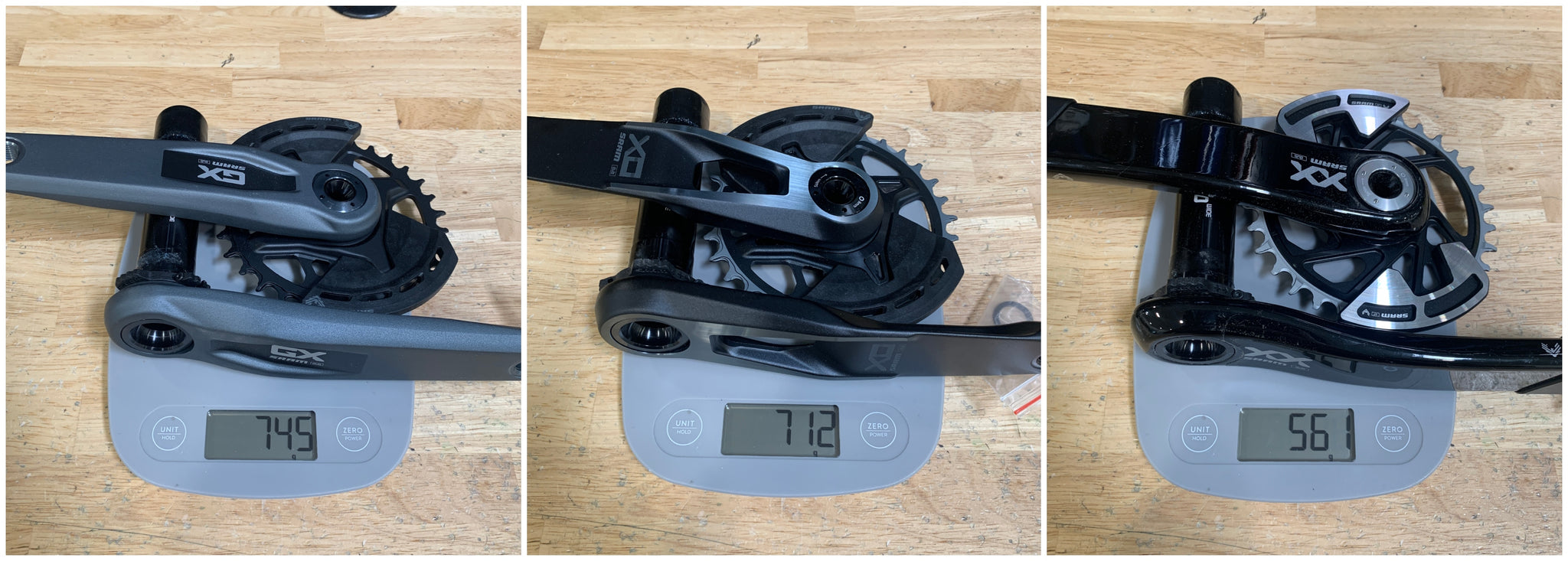 All three cranksets use DUB spindles, come with 32t 8-bolt direct-mount chainrings with integrated bashguards, and are available in 165mm, 170mm, and 175mm crank arm lengths. I weighed 170mm cranks for this comparison.
All three cranksets use DUB spindles, come with 32t 8-bolt direct-mount chainrings with integrated bashguards, and are available in 165mm, 170mm, and 175mm crank arm lengths. I weighed 170mm cranks for this comparison.
 GX and X0 Transmission use alloy cranks, which weigh quite a bit more than the carbon cranks used on XX. The X0 crank has been more extensively machined than the GX crank and it features a cut-out which shaves around 30 grams. The the integrated bashguards are all alloy and removable, but the XX bashguards have a machined finished that looks quite nice.
GX and X0 Transmission use alloy cranks, which weigh quite a bit more than the carbon cranks used on XX. The X0 crank has been more extensively machined than the GX crank and it features a cut-out which shaves around 30 grams. The the integrated bashguards are all alloy and removable, but the XX bashguards have a machined finished that looks quite nice.
SRAM GX vs. X0 vs. XX Transmission: Cassettes
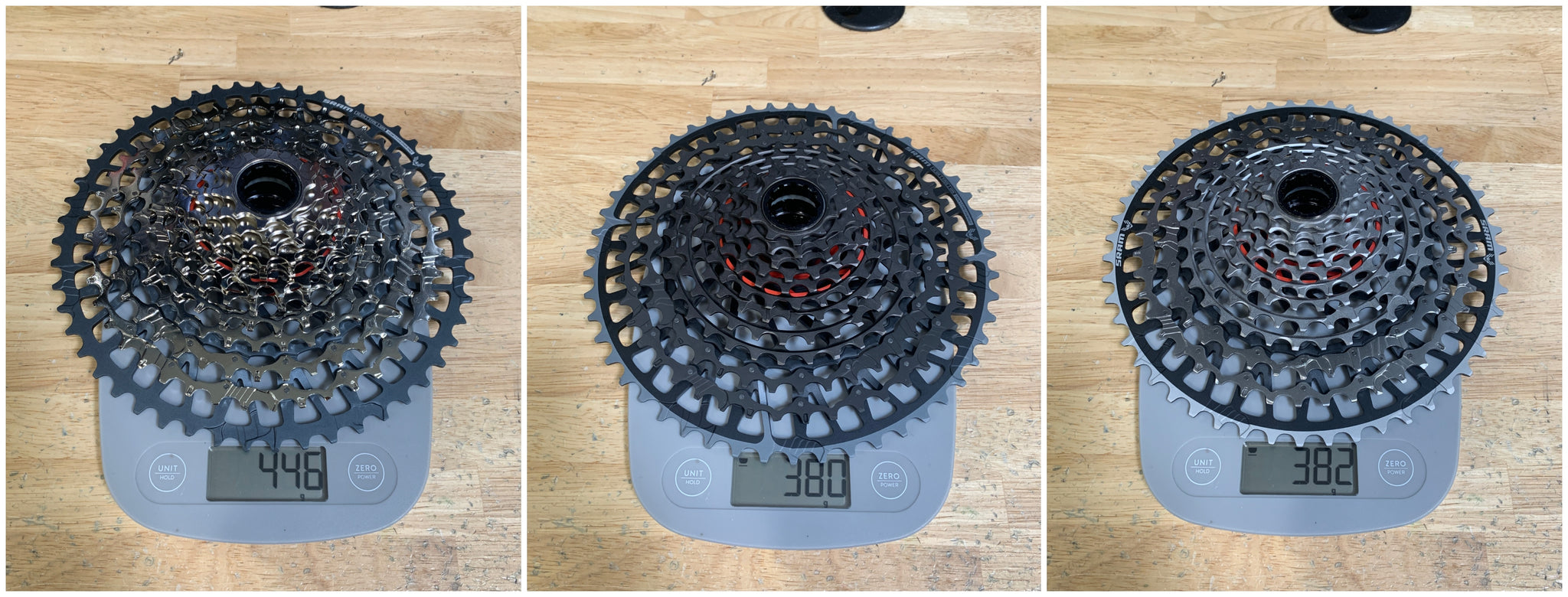 There's a pretty decent weight difference between the XS-1275 cassette used on GX and the XS-1295 and XS-1297 cassettes used on X0 and XX.
There's a pretty decent weight difference between the XS-1275 cassette used on GX and the XS-1295 and XS-1297 cassettes used on X0 and XX.
The GX cassette features the same 10-52t range as the X0 and XX cassettes, but the overall construction is a bit different. It utilizes a PinDome design for gears 1-8 and a one-piece "mini-cluster" for gears 9-12. X0 and XX cassettes use a larger one-piece cluster for gears 4-12, and only the three largest cogs are pinned. The use of more pins and individual cogs in the GX cassette increases the weight but reduces cost.
Interestingly, the X0 and XX cassette are supposed to weight the same (only the surface finish is different) but my XX cassette weighed 2 grams more than my X0 cassette. That's a small enough difference (0.5%) for me to ignore it. If I were to weigh a bunch of different X0 and XX cassettes I might get slightly different results due to small manufacturing variances.
Update: According to SRAM, the XX cassette is supposedly made from stronger steel than X0 and it has a harder/longer-lasting surface coating. Thanks to Kai Lindström for pointing that out in the comments!
SRAM GX vs. X0 vs. XX Transmission: Chain, Battery, and Controller
 Note: Subtract 44 grams for chain packaging.
Note: Subtract 44 grams for chain packaging.
The only real difference between the chains is that the XX chain uses hollow pins, which saves 10 grams. It also uses a different surface treatment. Comparing the X0 and GX chain, I can't find any real difference beyond the surface treatment. Black is cooler though, obviously.
You'll notice that I weighed the chains in the packaging. We still have to sell these groups so I didn't want to cut the packaging open. I found some opened packaging, weighed it, and accounted for that in the main weight table.
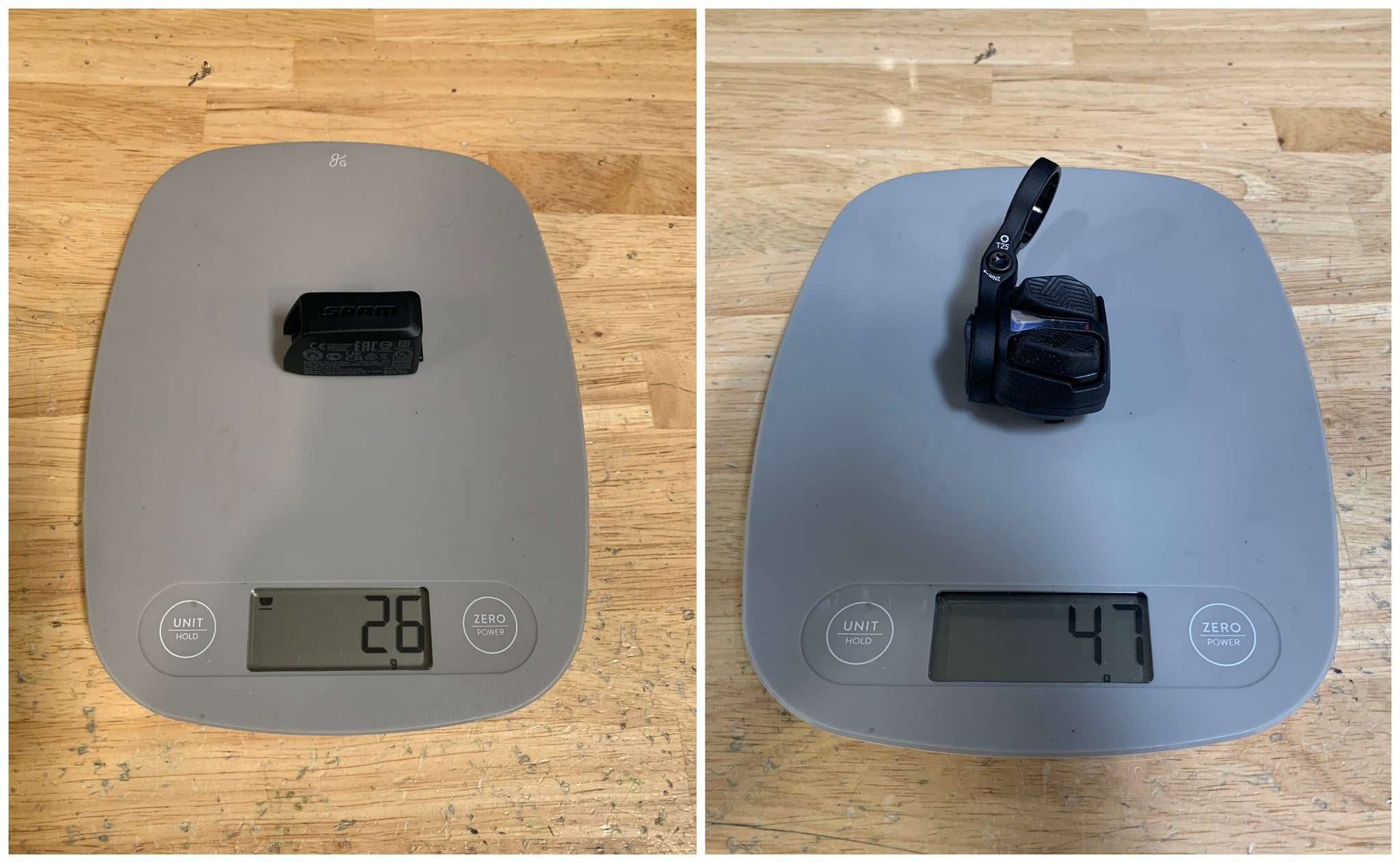 All three groups come with an AXS derailleur battery and a controller. They're all exactly the same, I even weighed them all to be sure.
All three groups come with an AXS derailleur battery and a controller. They're all exactly the same, I even weighed them all to be sure.
SRAM GX vs. X0 vs. XX Transmission: Which should you pick?
Practically speaking, there's no real reason to chose anything but the GX-level Transmission. It works exactly the same as the more expensive X0 and XX offerings, but costs a lot less. Yes, it weighs 100-300 grams more, but I doubt most riders can even notice that. It's less than the weight of a full water bottle. I also really like the revised battery position on the GX derailleur.
That said, now that I've taken a closer look at all three transmissions, I think this has solidified my decision to purchase X0 Transmission when the time comes. Seeing it in person, the black finish just looks so much better than bead blast grey finish on GX. Even though there aren't any notable performance differences, it seems more refined, especially the cranks. The GX components looked a bit toy-like to me. If I'm spending this much on a drivetrain, I want to get one I'll like looking at every day (yes, I'm very vain).
I do think XX is good looking too. I love the machined surfaces. But it doesn't look better to the point that I'd spend another $500 on top of X0. I'd rather put that money toward a power meter or carbon wheels.
Which would you pick?



